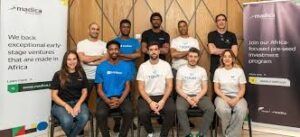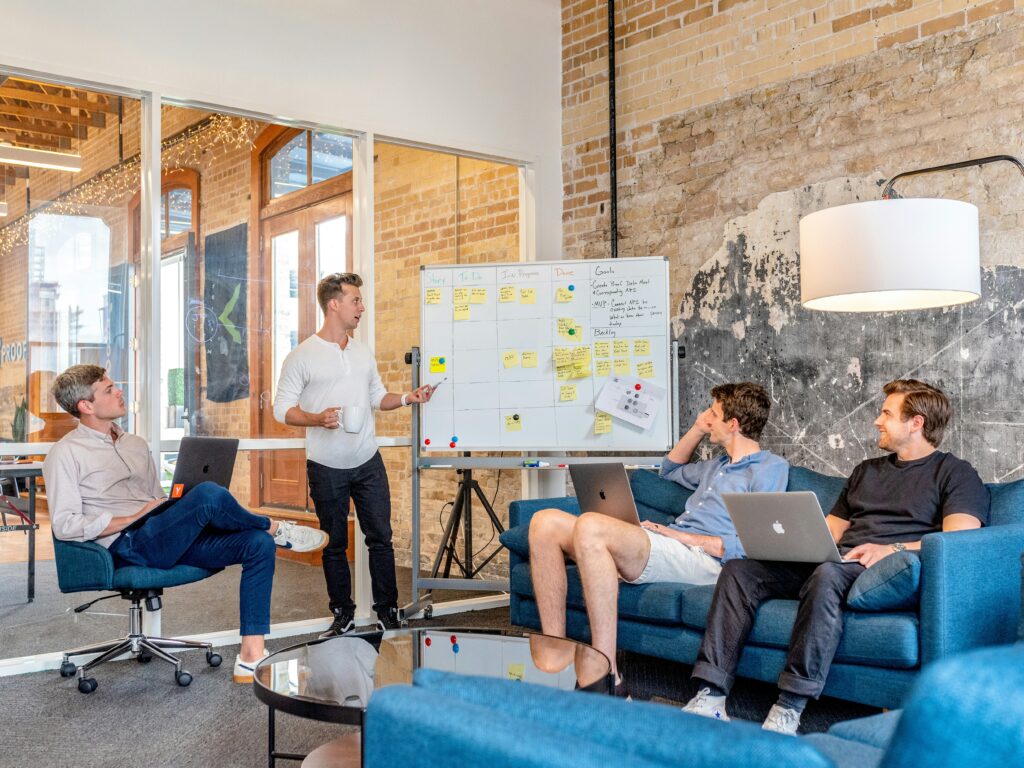London-based Wonder Studios raised $12 million seed funding led by Atomico with participation from LocalGlobe, Blackbird, Adobe Ventures, Erik Huggers, and Sidemen’s Upside Ventures to build AI-assisted film production studio—founded in 2025 by BAFTA-winning filmmaker Justin Hackney (former ElevenLabs creative director) and Xavier Collins (Lumiere Ventures founding partner) targeting creative services revenue while developing owned IP portfolio.
The company produces short films, music videos, and brand campaigns including Lewis Capaldi’s “Something in the Heavens” video and July-released quartet of short films exploring consciousness and simulation. Wonder competes in the emerging category alongside OpenAI-supported “Critterz” animated film and Andreessen Horowitz-backed Promise studio, all pursuing AI-accelerated content production models.
Investor composition includes ElevenLabs co-founder Mati Staniszewski plus executives from OpenAI and Google DeepMind, indicating AI infrastructure players backing production companies as distribution channels for generative media tools. Wonder will use funding to double the engineering team and expand original content production.
Wonder generates revenue through creative production services—client work producing videos, films, and campaigns for studios and brands. This model resembles traditional production companies (agencies, studios) rather than technology platforms, raising questions about scalability and venture returns.
Service businesses achieve linear growth constrained by billable hours and team capacity. Adding revenue requires hiring more creatives, increasing headcount and overhead proportionally. Technology companies scale revenue without proportional cost increases through software leverage—the fundamental dynamic enabling venture multiples.
Wonder’s engineering team expansion suggests technology components beyond pure creative services. Potential applications include: proprietary AI tools for filmmaking workflows, production automation software, or distribution platform for AI-generated content. However, specifics remain undisclosed.
The IP ownership emphasis provides an alternative monetization pathway. If Wonder produces original content achieving commercial success (theatrical release, streaming licensing, merchandising), IP revenues scale without linear headcount growth. However, entertainment IP hits are unpredictable—most productions fail to recover costs.
Hackney’s BAFTA win and ElevenLabs creative director role combines traditional filmmaking credibility with AI company experience. ElevenLabs (voice AI unicorn valued at $1B+) provides relevant context—understanding how generative AI tools integrate into creative workflows.
Collins’ Lumiere Ventures background brings investment perspective and business model design experience. The combination—filmmaker understanding production challenges and investor understanding scalability requirements—potentially addresses common founder blind spots where creative leaders build unsustainable businesses or business-focused founders produce poor creative output.
However, founding in 2025 and raising seed months later indicates limited operational track record. The company’s July short film release and Lewis Capaldi music video provide portfolio examples but don’t demonstrate sustainable revenue or repeatable production model.
For investors, bet centers on team capability rather than proven business model. Atomico, LocalGlobe, and Blackbird backed the company on founder pedigree and market timing rather than financial metrics or customer traction.
Wonder competes in a category emerging from AI content generation capabilities: studios producing film/TV content using AI tools for cost reduction and speed improvement while maintaining creative quality.
OpenAI-backed “Critterz” (animated film) demonstrates hyperscaler direct investment in content production—potentially testing commercial viability of AI-generated entertainment and creating a showcase for Sora video generation capabilities.
Andreessen Horowitz-backed Promise studio represents venture capital pursuing the same thesis: AI enables new content production models that traditional studios cannot match on speed or cost structure.
This competitive landscape creates strategic questions: Does Wonder possess differentiated technology versus competitors, or are multiple companies pursuing similar approaches betting on execution excellence? Can startup studios compete against well-funded rivals with AI infrastructure company backing?
Wonder’s differentiation claims center on “balancing innovation with craftsmanship” and maintaining “human creativity” as central to process. This messaging positions against perceived AI automation threatening creative employment—a politically sensitive framing appealing to creative talent concerned about AI displacement while potentially limiting technology adoption benefits competitors might achieve.
Adobe Ventures’ investment alongside venture firms indicates strategic investors evaluating Wonder as a potential partner, customer, or acquisition target. Adobe operates creative software (Premiere, After Effects, Firefly AI) used in film production—making Wonder both potential Firefly customer and showcase for Adobe’s AI creative tools.
Strategic investor participation creates advantages: Adobe could provide early access to new features, co-development partnerships, or customer introductions. However, strategic relationships also constrain independence—Adobe might restrict partnerships with competitors (Runway, Stability AI, Pika) or influence product decisions favoring Adobe ecosystem integration.
For Wonder, Adobe connection could accelerate market access to production companies already using Adobe software. For Adobe, Wonder provides use case validation and content examples demonstrating professional quality achievable with Adobe’s AI tools.
Staniszewski’s participation suggests potential ElevenLabs voice AI integration into Wonder’s production workflows. Voice acting represents substantial cost in animation and video production—AI voice generation dramatically reduces dubbing, localization, and dialogue revision expenses.
However, ElevenLabs angel investment doesn’t guarantee commercial partnership. Individual investor participation differs from corporate strategic investment. Staniszewski’s involvement might reflect personal belief in Wonder’s vision rather than formal ElevenLabs collaboration.
The OpenAI and Google DeepMind executive participation (not specified by name or role) similarly suggests access to AI capabilities beyond public offerings. If Wonder receives early access to advanced models, preferential API pricing, or co-development opportunities, these relationships create competitive advantages unavailable to studios lacking similar connections.
Collins’ emphasis on “sustainable business model rooted in intellectual property ownership” reflects recognition that service revenue alone doesn’t justify venture returns. Owned IP provides multiple monetization paths: theatrical/streaming distribution, merchandising, franchise development, and eventual library value.
However, entertainment IP development requires substantial capital before revenue generation. Traditional studios finance content production through debt, pre-sales, or studio backing. Venture-backed content companies must either: achieve service revenue profitability funding content investment, or raise additional capital specifically for production budgets.
The $12 million seed likely allocates primarily to team building and operations rather than major content production. High-quality film production costs $100K-$1M+ per minute depending on complexity. Wonder’s short films and music videos provide portfolio examples but require orders of magnitude more capital for feature-length productions commanding commercial distribution.
Market Timing and AI Content Acceptance
Wonder’s founding in 2025 capitalizes on generative AI reaching creative production quality thresholds. Sora, Runway Gen-3, Pika, and other video AI tools generated impressive outputs during 2024-2025, reducing skepticism about AI’s creative capabilities.
However, creative industry acceptance remains contested. Hollywood writers’ and actors’ strikes partially addressed AI concerns, with guilds negotiating protections against AI replacement. If entertainment unions resist AI-generated content through boycotts or contract restrictions, AI-native studios face distribution barriers.
The timing also coincides with streaming platform content demand. Netflix, Amazon Prime, Disney+, and others require continuous content flow feeding subscription services. If AI production enables meeting demand at lower cost, platforms might embrace AI content despite creative community resistance.
Revenue Model and Venture Return Requirements
At $12 million seed, investors likely target $300M-1B exit through acquisition or IPO. Achieving this requires either: scaling service revenue to $50M+ with strong margins justifying 10-20x multiple, or developing hit IP generating $100M+ revenues through distribution deals and licensing.
Service revenue path requires demonstrating differentiated value commanding premium pricing. If Wonder’s AI tools enable production at 50% cost of traditional studios while maintaining quality, customers pay for efficiency gains. However, if multiple competitors offer similar capabilities, pricing compresses to commodity levels.
IP revenue path depends on hits—unpredictable in the entertainment industry where most productions fail. Even experienced studios with large portfolios struggle maintaining consistent success. Venture-backed studio betting on IP hits faces high variance outcomes unsuitable for typical venture portfolio construction.
The hybrid model—service revenue funding operations while developing owned IP—mirrors production company strategies. However, traditional production companies don’t achieve venture-scale exits. Wonder must demonstrate technology components creating scalability traditional studios lack.
Investment Thesis Risks
Several factors could prevent Wonder achieving venture returns:
Content quality ceiling: AI-generated elements might achieve “good enough” quality for commercial work but fail to reach artistic standards for premium distribution.
Creative talent resistance: Filmmakers, actors, and crew might avoid AI-native studios protecting employment and artistic integrity.
Technology commoditization: If AI video generation becomes widely accessible, Wonder’s technical advantages erode.
Competitive intensity: Well-funded rivals with AI infrastructure backing could outspend Wonder on talent, technology, and marketing.
IP development failure: Original content might not achieve commercial success justifying production investment.
For seed investors, the bet assumes AI enables new content production model that incumbents cannot replicate, and Wonder’s team can execute building sustainable business before capital exhaustion. The 12-18 month seed runway requires demonstrating traction attracting Series A within a limited timeframe.








